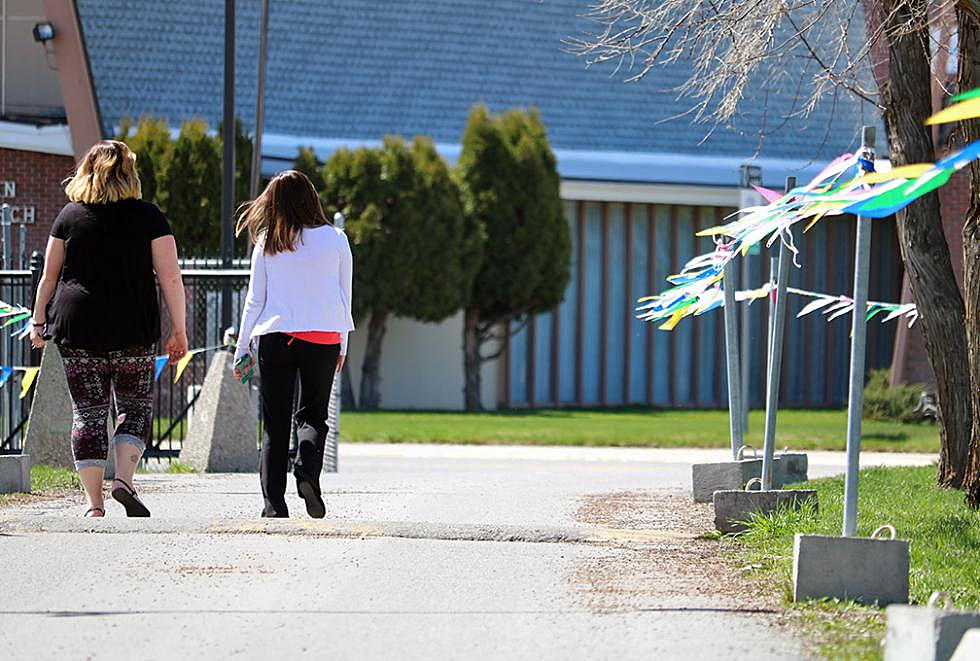
Fairgrounds trail plan wins $1.1M approval from Missoula Redevelopment Agency
If one happened to gaze over any southside Missoula map one year ago, two large holes in the city's transportation grid would have been plainly evident – and even more so to those looking to make the shortest drive, walk or bicycle trip between two points in the Midtown district.
For one, Southgate Mall served as a sweeping sea of asphalt, disrupting connectivity in all directions. Just to the east, the Missoula County Fairgrounds sat for decades as an impenetrable and increasingly blighted fortress.
This spring, however, the city completed Mary Avenue across Southgate Mall, creating the first in what's envisioned as a new road grid at the epicenter of future development. And on Thursday, the barrier that is the county fairgrounds began to crumble, as plans to create a trail system across the property took a leap forward.
“One of the things that has been expressed in plan after plan and meeting after meeting, and formalized in adopted city plans, is the desire to penetrate the fairgrounds,” said Ellen Buchanan, executive director of the Missoula Redevelopment Agency. “These connections not only connect the (Midtown) district to other facilities outside the district, it also connects the district itself.”
MRA's Board of Directors on Thursday approved a $1.1 million request by the fairgrounds for tax increment financing to fund a network of new trails and walkways across and within the fairgrounds property.
The funding also pays for trail lighting and landscaping, and the removal of the chain link fence that was topped with barbed wire not too long ago. While approval of the funding must pass the City Council, those watching the effort called Thursday's vote a big step forward.
“The barrier the fairgrounds poses is a pretty big obstacle in terms of cost and time and energy to get around,” said Aaron Wilson, a transportation planner with the city. “This makes it much more permeable and connects many of our future or existing facilities.”
The trail system was identified in a Midtown needs assessment conducted in 2011, and was included in the city's Bicycle Facilities Master Plan in 2016. The trails were needed to fill what the city saw as a break in connectivity, forcing cyclists and pedestrians to navigate the dangers of Malfunction Junction, where Brooks Street, South Avenue and Russell Street intersect.
But while the trails serve as a nod to non-motorized transportation in a part of Missoula that lacks such options, they also acknowledge the Midtown district's growth. The area has seen increased investment over the past few years, making it the busiest active Urban Renewal District within the city.
While the fairgrounds don't lie within the Urban Renewal District, supporters of the project believe the investment in trails and connectivity will enhance investment opportunities in surrounding areas, which do lie within the district.
“Even though the acreage is not in the URD, there's language in state statute that recognizes that sometimes connections and infrastructure extensions are needed outside a district to make a district function better,” Buchanan said. “The other piece of that is, we're seeing revenue in this district increase consistently.”
To fund the project, MRA looks to wrap the $1.1 million into bonds that will be issued next month for construction of Montana Rail Link Park and completion of the last segment of the Bitterroot Branch Trail.
Combined, the entire bonding package will amount to roughly $5 million, and while both the trails project at the fairgrounds and the nearby park project are both tax exempt, Buchanan said the Urban Renewal District has the capacity to cover it.
“The (financial) analysis shows that if we fund this project with bonding, and we combine those bonds with the ones we're going to issue to build MRL Park and the trail and pay for acquisition of that property, we're still going to have between $10 million and $12 million in bonding capacity in this district,” Buchanan said.
As approved, a trail will cross the fairgrounds from Fairview Avenue to South Avenue, and two additional trails will skirt the fairgrounds on both the east and south sides, connecting with the YMCA and Playfair Park.
A series of walkways will also be constructed on the fairgrounds, and new sight-lines will be established to showcase the property's green space and historic structures. The chain link fence will come down, replaced with wrought iron fencing and landscaping.
As part of the agreement, the trails must be open to the public year round, less special events that require controlled access. Redevelopment of the fairgrounds is also set to begin next month.
“We see the phenomenal value of using tax increment financing to extend the life and development of Midtown, which has for many years been ignored and somewhat blighted,” said Eric Gabster, representing the Missoula Midtown Association. “The association has always seen that a robust fairgrounds is very important for driving all level of business and community life in the Midtown area.”
